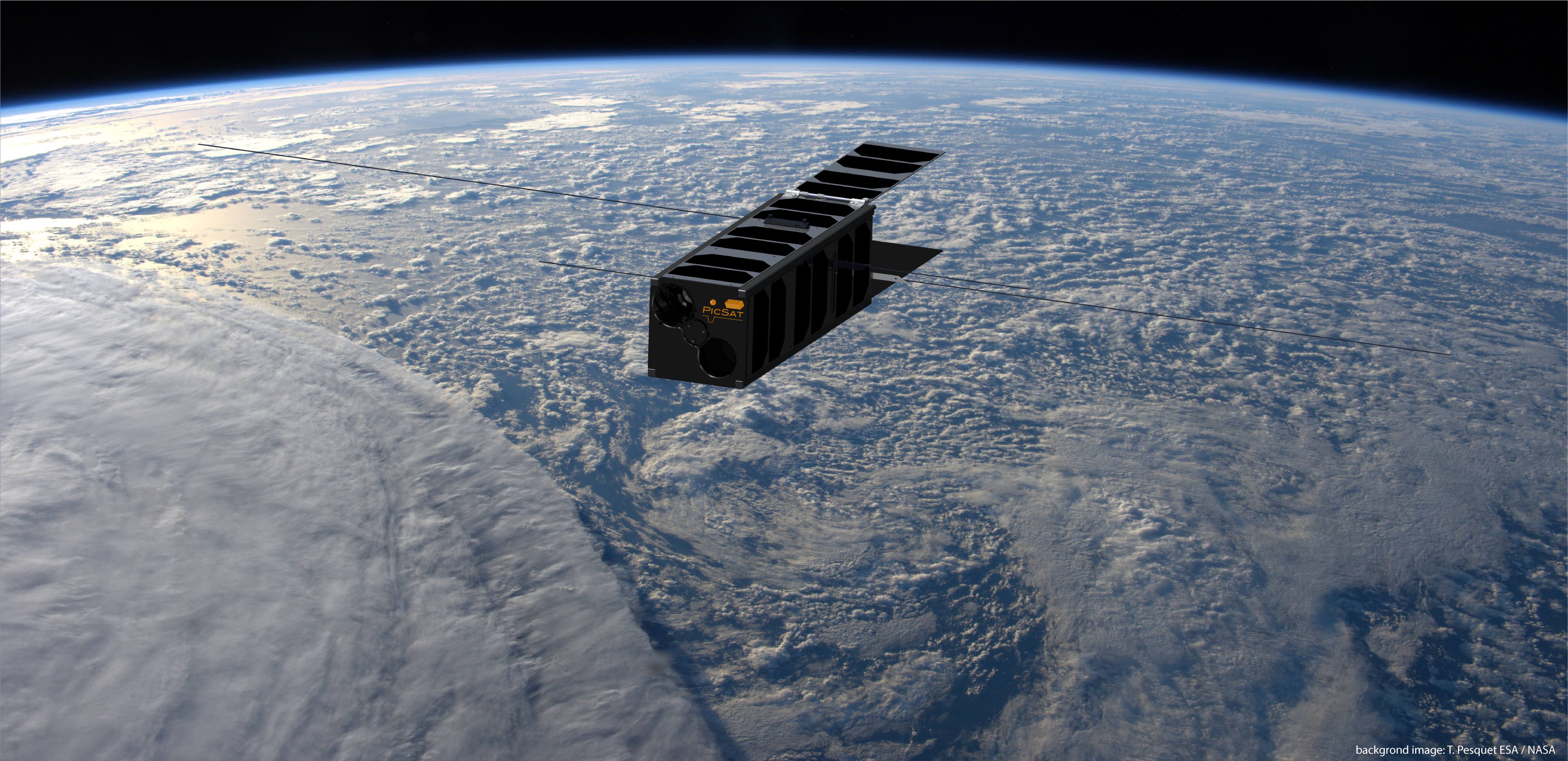
The PicSat project was conceived in response to the predicted transit of the young exoplanet in the Beta-Pictoris star system. In order to catch and follow this possible transit, a continuous monitoring of the brightness of the Beta-Pictoris star is needed, which can only be achieved from space. Observing a transit of a young planet in front of its young star can provide with new information that will help better gain more insight into the process of planet and star formation. Beta-Pictoris b might only transit once every 36 years, so this is an occasion not to be missed!
An important innovative technological goal of the PicSat project is that of demonstrating the concept of injecting star light into an optical fibre onboard a satellite in Earth orbit.
The PicSat project started in 2014 and at the end of 2017 PicSat is ready to be launched into Earth orbit. PicSat is the first CubeSat fully developed at the Paris Observatory / LESIA laboratory in France, in collaboration with the Space Pole CCERES of the Université PSL, that is ready for launch and that will be operated locally from the Paris Observatory. It is one of the first CubeSats that will perform astronomical observations.
The PicSat core team is hosted at the Paris Observatory / LESIA laboratory in France:
| Name | Position |
| Sylvestre Lacour | Principal Investigator |
| Vincent Lapeyrere | Project Manager |
| Lester David | System Manager |
| Mathias Nowak | Payload (and webmaster!) |
| Antoine Crouzier | Flight Software |
| Guillaume Schworer | Ground Segment Software |
| Maarten Roos | Communication and Outreach |
Many other people have been involved in development of PicSat:
